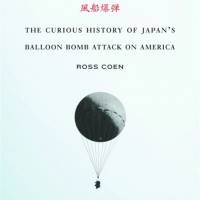At the same time as the U.S. Air Force was reducing Japanese cities to rubble in the final year of World War II, mainland America was also being threatened by aerial attack. Free-floating balloons, loaded with bombs, were launched from Japan's Pacific coast aimed at the U.S. mainland more than 10,000 km away.
Fu-go, by Ryukyu Shimpo, Ross Coen
University of Nebraska Press, Nonfiction.
These lethal balloons, known as Fu-Go, were, on the whole, hugely ineffective. They were intended to engulf western swaths of the U.S. in forest fires, but in only a few cases did they do any real damage.
Historian and writer Ross Coen opens with one such case: A young reverend and his pregnant wife stumble upon a balloon after taking a small group of children on an outing after Sunday school. It is a tragic encounter.
However, most of the discovered balloon bombs — which Coen documents in masterly detail — only aroused curiosity.
At first the Americans believed them to be weather balloons, but as more and more made land in the U.S. and Canada, they were able to build a fairly precise picture of the spectacular and desperate measures the Japanese were undertaking in their last-ditch war effort.
The American's biggest fear was that the balloons would be the harbinger of biochemical warfare on American soil. This, as we know, never materialized.
Coen is mostly concerned with events as they unfolded in America, but along the way he documents soldiers and civilians, from both sides, who got caught up in a story that at times will have you scratching your head: transoceanic balloon warfare? It's hard to believe, but in war, it seems, anything is possible.



